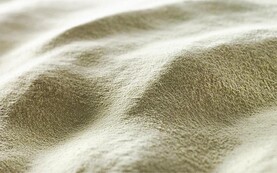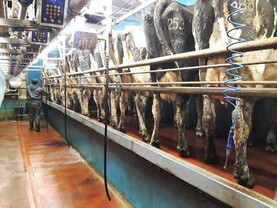No wonder milk production in Ireland has increased.
While it is a Government policy issue as to how the sector is regulated as regards water quality, greenhouse gases, etc, the economic and competitive argument for the Irish dairy industry is overwhelming.
Teagasc has just published a major examination of the effect on Irish dairy competitiveness before and a few years after the abolition of the quota.
What is particularly striking about the results is not that Irish dairy farmers continue to produce milk at low cost from grass. This was always the case
Broadly, it shows very clearly how the Irish dairy sector has become the most cost efficient in Europe, though it should be pointed out that eastern Europe, especially Poland, has not been included in the study.
What is particularly striking about the results is not that Irish dairy farmers continue to produce milk at low cost from grass. This was always the case.
What has changed since the abolition of quotas is that the overhead costs on dairy farms are spread over increased volumes of milk as the land and buildings are used more efficiently.
In surveys done before the quota was abolished, the implied cost of land and family labour made the total cost of Irish milk production on kilos of milk solids produced much the same as other European countries.
Irish dairy farmers are the lowest-cost producers in Europe
This was mainly a reflection of the inefficiencies created by sudden implementation of the quota and its continuation for more than a generation.
At this stage, the Teagasc study clearly shows that taking all costs into account, Irish dairy farmers are the lowest-cost producers in Europe not just taking into account the actual cash costs but also the entire range of fixed costs where we are now well below countries such as Belgium and the Netherlands which were better than us in the past.
With farming, we have a small number of tillage farms but are far below self-sufficiency in tillage products
These results pose a dilemma for policymakers. We have very few truly competitive sectors in the Irish economy. Outside of agriculture, the multinational sector has had an enormous influence on employment wage levels and the costs of doing business.
With farming, we have a small number of tillage farms but are far below self-sufficiency in tillage products. Beef and sheep producers are, in most years, dependent on some form of basic farm payment.
The thoroughbred horse sector and forestry have clear advantages but there are land and capital limitations.
At the end of the day, it is hard to ignore the in-built advantages of the co-operative structure, the climatic and grass advantages as well as the processing and breeding infrastructure that have been built up to service the dairy sector.
Following the various climate reports, the Government has a policy tightrope to walk but this latest Teagasc report is a valuable addition to the mix.






 This is a subscriber-only article
This is a subscriber-only article









SHARING OPTIONS: